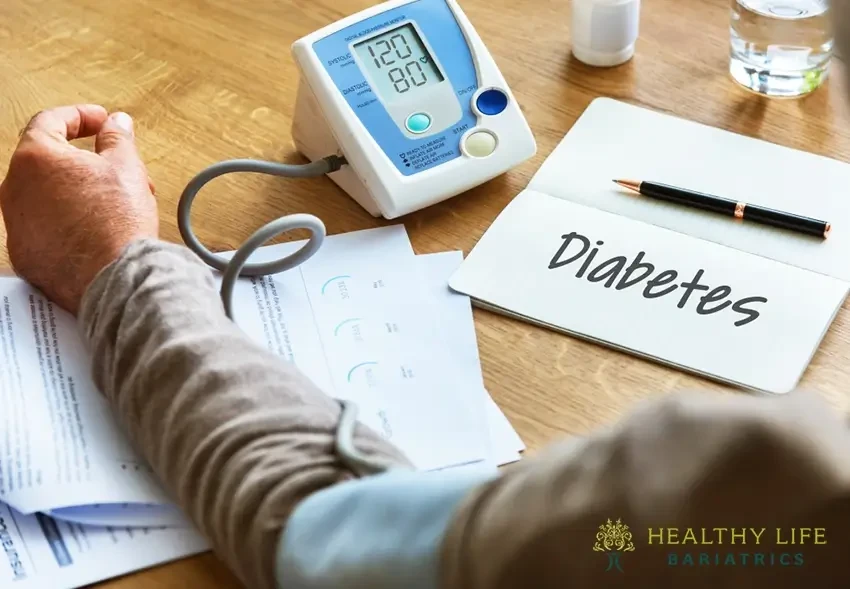Introduction: Type 2 Diabetes Treatment Algorithm: A Comprehensive Guide
Living with Type 2 diabetes requires a strategic and personalized approach to treatment. As medical knowledge advances, so do the treatment algorithms designed to manage this chronic condition. Type 2 diabetes is a chronic condition that affects how the body processes glucose (sugar). Over time, high blood glucose levels can lead to serious complications like heart disease, stroke, kidney disease, eye problems, and nerve damage.
Following the latest treatment algorithms can help people with type 2 diabetes better manage their blood glucose and reduce complications. This guide will provide an overview of the latest recommendations for managing type 2 diabetes, exploring the latest developments and emphasizing the importance of individualized care.
Understanding Type 2 Diabetes
Before we dive into treatment algorithms, let's briefly understand the nature of Type 2 diabetes. This metabolic disorder occurs when the body becomes resistant to insulin or doesn't produce enough of it, resulting in elevated blood sugar levels. Effective management is crucial to prevent complications and improve the quality of life for those with the condition.
Diagnosing Type 2 Diabetes
Type 2 diabetes is typically diagnosed using one of the following blood tests:
A1C test - This test provides an average of blood glucose levels over the past 2-3 months. An A1C of 6.5% or higher indicates diabetes.
Fasting plasma glucose test - A blood glucose level of 126 mg/dL or higher after an 8-hour fast is diagnostic of diabetes.
Oral glucose tolerance test - This test measures blood glucose after drinking a sugary solution. Glucose levels of 200 mg/dL or higher at 2 hours confirm diabetes.
If test results are in the prediabetes range, repeat screening should be done every 1-2 years.
The Foundation of Treatment Algorithms

Treatment algorithms serve as roadmaps for healthcare providers, it is dynamic and multifaceted guiding them through the decision-making process for managing Type 2 diabetes. They consider factors such as age, comorbidities, and patient preferences. The American Diabetes Association (ADA) and the European Association for the Study of Diabetes (EASD) collaboratively update and publish comprehensive guidelines for healthcare professionals. The primary goal is to achieve and maintain glycemic control while addressing individual patient needs and minimizing side effects.
Lifestyle Modification as a Cornerstone
The cornerstone of any Type 2 diabetes treatment plan is lifestyle modification. Incorporating a balanced diet, regular physical activity, and weight management are fundamental components. Lifestyle changes not only improve glycemic control but also contribute to overall well-being.
Lifestyle changes like improved nutrition, weight loss, and exercise are recommended as first-line treatments for all people with type 2 diabetes.
Diet - Focus on vegetables, fruits, whole grains, legumes, nuts and healthy fats. Limit sweets, sugary beverages, and refined carbohydrates. Work with a dietitian to create a balanced meal plan.
Weight loss - Losing just 5-10% of body weight can improve insulin sensitivity and blood glucose.
Exercise - Aim for at least 150 minutes per week of moderate activity like brisk walking. Include strength training 2-3 times per week.
Stress management - Managing stress through relaxation techniques, social support, and good sleep hygiene can aid blood glucose control.
Medications for Glycemic Control
If lifestyle changes are not enough to reach HbA1c goals, antihyperglycemic medications should be added. Current ADA guidelines categorize these medications into the following tiers:
Tier 1 - Metformin is the preferred initial medication for type 2 diabetes due to its high efficacy, favorable side effect profile, low cost, and potential cardiovascular benefits.
Tier 2 - These medications can be added if metformin alone does not achieve glycemic control. Options include sulfonylureas, thiazolidinediones, SGLT2 inhibitors, GLP-1 receptor agonists, DPP-4 inhibitors, and basal insulin. The choice depends on patient factors.
Tier 3 - Includes insulin and pramlintide. Used for advanced type 2 diabetes when combinations of other medications do not provide adequate control.
Treatment targets and medication adjustments should be highly individualized with consideration of each patient's needs and priorities. Ongoing monitoring of HbA1c, along with self-monitoring of blood glucose for some patients, helps guide medication titration and adjustments over time.
Blood Pressure and Cholesterol Management
Along with glucose control, managing other cardiovascular risk factors is crucial. Recommended targets include:
Blood pressure <140/90 mmHg (lower if high risk) using ACE inhibitors or ARBs as first-line medications.
LDL cholesterol <100 mg/dL or <70 mg/dL for very high-risk patients using statins as first-line medication.
Prescription low-dose aspirin therapy for patients >50 years old with increased cardiovascular risk.
Pharmacological Interventions
When lifestyle modifications alone are insufficient to control blood sugar levels, pharmacological interventions come into play. A diverse range of medications is available, each with its unique mechanism of action. From metformin to sulfonylureas, dipeptidyl peptidase-4 (DPP-4) inhibitors to sodium-glucose co-transporter-2 (SGLT2) inhibitors, healthcare providers have an array of options to tailor treatment to individual patient needs.
Personalized Medicine in Diabetes Treatment

Personalized medicine is gaining prominence in the field of diabetes management. Advancements in genetic research enable healthcare providers to identify specific patient characteristics and tailor treatment accordingly. This approach not only improves efficacy but also minimizes the risk of adverse effects.
Preventing and Monitoring for Complications:
Even with good glucose management, complications can develop over time. Recommended screening and prevention practices include:
Annual eye exams to monitor for diabetic retinopathy.
Urine and blood tests to assess kidney function and look for protein in the urine.
Annual comprehensive foot exams to check for peripheral neuropathy and circulatory problems.
Flu and pneumonia vaccinations.
Ongoing diabetes education and support of self-management behaviors are also critical for preventing acute and long-term complications.
Emerging Therapies and Technologies
In the ever-evolving landscape of diabetes care, emerging therapies and technologies play a pivotal role in refining treatment algorithms. Continuous glucose monitoring (CGM) systems, artificial pancreas technologies, and novel drug developments are revolutionizing how healthcare professionals approach Type 2 diabetes.
The Role of Artificial Intelligence (AI) in Treatment Decision-Making
AI is increasingly being integrated into diabetes care. Predictive modeling, risk stratification, and treatment optimization are areas where AI demonstrates significant potential. By analyzing vast amounts of patient data, AI algorithms assist healthcare providers in making informed and personalized decisions.
Weightloss Surgery for Controlling Type 2 Diabetes
A novel and undisputed method to control and even reverse Type 2 diabetes remains weight loss surgery. There are currently two definitive weight loss surgeries available. The first includes a gastric bypass wherein the gastro-intestinal tract is reorganized thereby bypassing the first segment of the duodenum. By virtue of bypassing this first segment of the duodenum,
the entire metabolic functionality of the body is altered resulting in definitive alteration in the insulin stimulation pathways. A high percentage of patients who undergo a gastric bypass have observed a reduction in diabetes medications even before they have experienced significant weight loss. The second, and most frequent weight loss surgery,
includes the gastric sleeve procedure. This procedure is associated with significant weight loss that results in similar though delayed reversal of Type 2 diabetes symptoms. Patients who undergo gastric sleeve surgery will lose significant weight as observed by loss in the gut fat. What is significant about the reduction of gut fat is that it is directly associated with a decrease in pro-inflammatory products.
Proinflammatory products, i.e. cytokines, such as TNF-alpha are produced by gut fat cells. Furthermore, they are responsible for decoupling the insulin receptor which results in the development of insulin resistance. The culmination of years of exposure to inflammatory cytokines and the progression of insulin resistance is the onset of diabetes.
Conclusion: Type 2 diabetes treatment algorithm
As we navigate the complex terrain of Type 2 diabetes treatment algorithms, it becomes evident that a holistic and individualized approach is essential. Type 2 diabetes treatment requires an individualized, multifaceted approach. The latest guidelines emphasize lifestyle management, personalized medicine,
cutting-edge technologies collectively contribute to effective diabetes management, and antihyperglycemic medications if needed to lower glucose levels. Ongoing monitoring and attention to cardiovascular risk factors and diabetes-related complications are also essential components of care. The most effective treatment and potential reversing intervention to Type 2 diabetes remains weight loss surgeries.
Both gastric sleeve and gastric bypass remain the mainstay of weightless or bariatric surgeries. Staying informed and following evidence-based algorithms for type 2 diabetes allows patients and providers to optimize outcomes, reduce risks from this lifelong disease, and lead to healthier lives.

